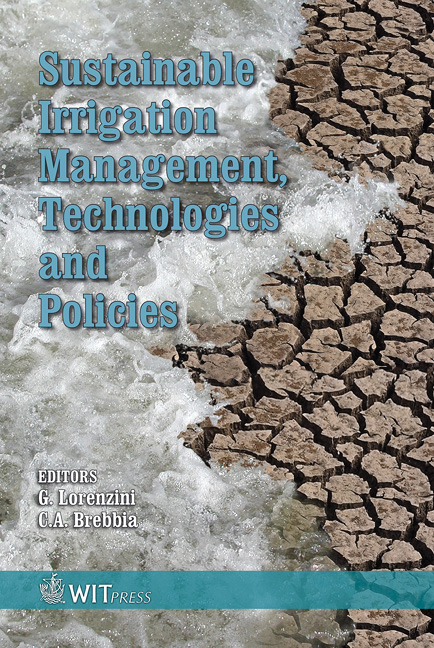AWAM: A Model For Optimal Land And Water Resources Allocation
Price
Free (open access)
Transaction
Volume
96
Pages
12
Published
2006
Size
357 kb
Paper DOI
10.2495/SI060111
Copyright
WIT Press
Author(s)
I. Smout & S. D. Gorantiwar
Abstract
Planning for irrigation water management in rotational irrigation schemes consists of the preparation of an allocation plan for distribution of land and water resources to different crops up to tertiary or farm level, and water delivery schedules in terms of timing and amount of water delivery for this allocation plan according to the set objectives/targets. It is necessary to consider the heterogeneity in soils and climate, and complexity of the water distribution network, while developing these allocation plans. Further, there is a need to allocate water both efficiently and equitably. The preparation of the allocation plan becomes a complex process when the water availability is less than the demand for water for adequate irrigation of the culturable command area of the irrigation scheme. In the past, several methodologies have been developed to prepare the allocation plans during the planning process. However these models do not consider the above mentioned requirements together. This paper presents the developed model, AWAM (Area and Water Allocation Model) that addresses the heterogeneity in the irrigation scheme and includes the performance measures of productivity and equity while developing the allocation plans. The AWAM model has four phases to be executed separately for each set of irrigation interval over the irrigation season. The paper briefly discusses the applicability of the AWAM model by producing land and water allocation plans and water delivery schedules for case study of the Nazare medium irrigation scheme in Southern India. Keywords: optimization, irrigation, land & water allocation, productivity, equity.
Keywords
optimization, irrigation, land & water allocation, productivity, equity.





